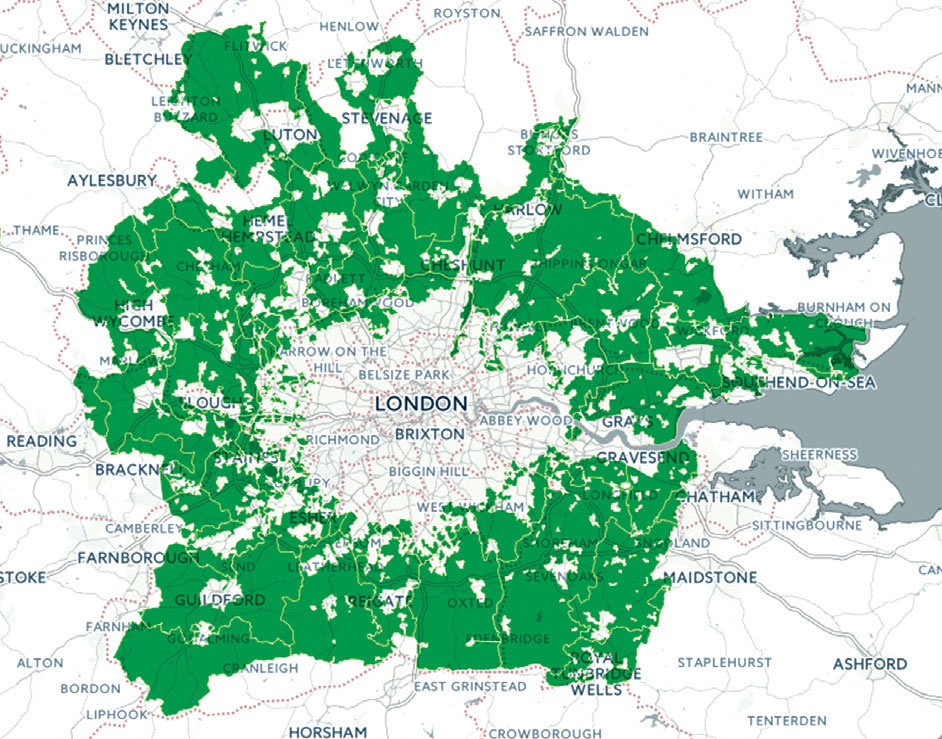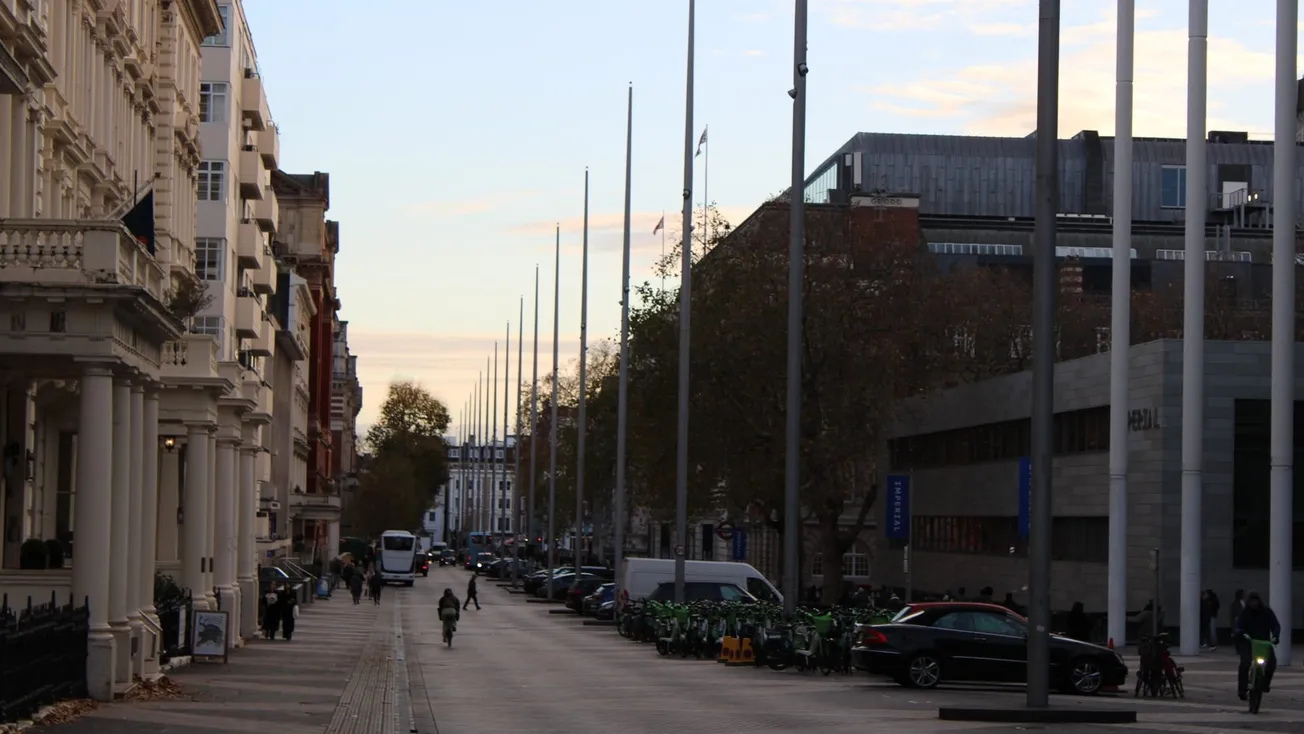Dear Londoners — ever clambered to the top of the BFI IMAX in a tux? Us neither, but then again we aren't global superstar and beloved action hero Tom Cruise, who was spotted up there yesterday before receiving an honorary fellowship from the institution. We can only imagine the view must've been sublime.
For something a little closer to earth, the big story in your Monday briefing is on the mayor's decision to allow developers to build on the capital's green belt — a move he claims will alleviate the housing crisis. Is he right? Let's take a look...
Like what we're doing? Receive exclusive stories and members' perks by subscribing to The Londoner — simply click here or hit the button below.
Big story: London's green belt set to be transformed as mayor gives backing for development
Topline: In a speech on Friday, Sir Sadiq Khan announced that City Hall was “actively exploring” the development of green belt land around the capital, calling current rules “wrong, out-of-date and simply unsustainable”.
Context: London’s housing crisis is severe. Levels of homeownership continue to fall from their early 1990s high, meanwhile the number of private renters has soared (30.1%, the highest since 1971). Affordability is a key factor: renters suffered an annual rise of 11% last year. Khan says that to tackle this, London needs to build 88,000 homes annually — currently, that number is around 35,000.
What will plans involve? Full details are yet to be announced, but initial reports suggest that land may be eligible for housing if criteria such as energy efficiency, affordability, transport links and access to outdoor space are met. Khan also termed much of the London green belt “low-quality” — including car parks, roadsides and petrol stations — with only 13% of it comprising parkland open to the public. Although brownfield sites would continue to be the priority for developers, he said “this alone will not be enough to meet our needs”.
Green belt areas considered particularly ripe for development include Bromley, Havering, Hillingdon and Enfield. The latter has already seen plans by the local authority for “Vicarage Farm”, a 3,700-home development of the area’s bucolic meadows, which has met with fierce opposition from local campaign groups.

What do opponents say? Opposition to the plans include environmental charities, who claim that Khan’s plans may deprive areas of much-needed access to green space, as well as those who argue that rent controls and landlord reforms are what’s truly needed to address the housing crisis.
The countryside charity CPRE has said that in the last decade London’s housebuilding has already far outstripped its population growth (11% to 6%) yet rents have continued to climb, and pointed out that the government’s own figures state that its planning proposals would only reduce the average house price by around 0.8–0.9%: “The answer [to the housing crisis] isn’t to build on local parks, playing fields and farmland, it’s to transform the market and hold developers to account with ambitious and enforceable targets for social and genuinely affordable homes.”
How likely is it to happen? Pretty likely. The plan has the full support of the government, with Deputy Prime Minister Angel Rayner calling it a “bold proposal” that “rises to the challenge of tackling London's housing crisis”. The government has itself announced proposals to overhaul the National Planning Policy Framework to allow developers to more easily build on green belt land, which it hopes will allow 1.5 million houses to be built within 5 years. Environmental campaigners, however, say that these plans may contradict Britain’s Biodiversity Net-Gain mandate and the UN’s biodiversity treaty.
Your news briefing
📋 The government is planning on relocating thousands of civil servants out of London in a bid to localise politics around the country. The “Places for Growth” plan, which seeks to move 22,000 officials, was originally put forward by Sunak in 2020 as part of the Tories’ levelling up push but has now been picked up by Labour.
🚗 In South London, a local group has successfully forced the council to scrap a low traffic neighbourhood (LTN) scheme. After taking Lambeth council to the high court, the West Dulwich Action Group (WDAG) have become the first first local campaign group to take the council on in the courts over an LTN and win, a judgement that could have far-reaching consequences across the city.

👑 Prince Harry surprised the residents of a street in Fulham after accidentally ringing a succession of incorrect doorbells while looking for the house of “old friends” John and Georgina Vaughan. The episode has attracted criticism in the press as that same week the prince was in the courts arguing that his life was at risk without armed police protection.
🇻🇳 One of the capital’s oldest Vietnamese restaurants, Viet Hoa, has closed its doors after 30 years due to its owners retiring, reports the CODE Hospitality bulletin. The brainchild of Chi Hien Ly and her husband, the institution began its life as a makeshift canteen in the nearby An Viet Foundation community centre, before becoming the first Vietnamese restaurant to open on Kingsland Road’s so-called “Phở mile”.
Got a story for us to look into? Please get in touch.
Catch-up and coming up
Last week saw:
- A behind-the-headlines investigation into whether, as many media outlets suggest, London’s ultra-rich really are leaving the capital
- A scene report on the thrills and spills of London’s weirdest new night-out: chessboxing
- A long-read on the work of police spotters, who identify potential football hooligans ahead of games.
Wining and dining
With endless offerings and non-stop openings, we all know that deciding where to eat and drink in the capital can be fraught. We want to make it easy — so every week we’ll give you our insider guide to the city’s best spots.
One perfect meal: Mauby, 1 Harefield Road, London SE4 1LW
Not even a year into its tenure on a quiet Brockley backstreet, and Moreby has already become the South East London food destination du jour. Named after a bittersweet Caribbean drink, the restaurant offers a seasonal twist on island cuisine. The menu is one of quiet, assured deftness: 8 or so small plates, designed to be shared — a forkful here, a pinch there. These range from sherry-marinated lamb and crispy plantain to sweet-smoky jerk halloumi, a favourite from husband-and-wife founders Daniel and Heleena Maynard’s previous Deptford street food outfit.
The interior of Mauby, all off-white tiles and scrubbed walls and flickering candles, lends itself well to the laid-back sophistication of its cooking. The wine list — natural, unfussy, blissfully concise — is cheap (£4.50 for a house white!), but the cocktails are the real star of the show. Our pick is the eponymous Mauby, which combines the drink of the same name with Bajan Cockspur rum. It’s delicious: complex, herbal and thrillingly boozy. — Hannah
One perfect drink: Peckham Pelican, 92 Peckham Road, London SE15 5PY
The Peckham Pelican ticks a large number of boxes when it comes to what a decent boozer should aspire towards. There’s good, cheap food, they have their own brand of pilsner (£5 per pint — very reasonable by today’s standards) and the house wine is decent. There’s a large smoking area out the front for summer sojourns and, inside, a number of large, comfy sofas among the tables and benches.
The crowd has become increasingly student-led over the years, which is fine so long as you don’t mind feeling old. That said, the majority of customers at Peckham Pelican seem to be on first dates. Again, this isn’t too much of a problem, although one Londoner staffer does recall having to relocate to another table because the would-be couple next to them wouldn’t stop reciting terrible slam poetry to each other. Nevertheless, the Pelican is a good enough spot to forgive that kind of trauma and keep returning for the £6 cocktails. — Miles
Back what we're doing? Become one of our founding members by subscribing to The Londoner — simply click here or hit the button below.
Our favourite reads
Tate Modern Is the Museum of the Century (Like It or Not) — Jason Farago, The New York Times
Both love letter and eulogy, art critic Jason Farago's piece on Tate Modern names it the museum of the century, for better and worse. “The shift to spectacle in the Turbine Hall — the shift to accessibility and immediacy that Tate Modern made its early signature — would prefigure, and justify, the shift to evangelism in culture at large,” he writes. As it celebrates its 25th anniversary, the institution is facing a funding crisis and looming job losses; its future is uncertain.

Hippy, capitalist, guru, grocer: the forgotten genius who changed British food — Jonathan Nunn, Guardian
One from the archive: this long-read on Nicholas Saunders, the counter-culture visionary behind Monmouth Coffee and Neal’s Yard, is not merely a deep-dive into the capital’s culinary institutions but a portrait of an entire country’s changing tastes. Who better to pen it than Vittles founder Jonathan Nunn, one of the most influential figures on the contemporary London food scene?
To Do List
The Crucible, The Globe, until 12 June
We can’t wait to see what Ola Ince does with her adaptation of Arthur Miller’s perennial favourite, The Crucible. The first non-Shakespeare play to be staged outdoors at the Globe, it’s sure to be a perfect fit for the space — historic, sprawling and not a little spooky.
Photo London, Somerset House, 15–18 May
The tenth edition of the UK’s pre-eminent photography fair returns to Somerset House this May. Its public programme is as excellent as ever, with the public programme including exhibitions, talks and workshops.
If you enjoyed this briefing, why not become one our early backers by subscribing to The Londoner now — simply click here or hit the button below.

Comments
How to comment:
If you are already a member,
click here to sign in
and leave a comment.
If you aren't a member,
sign up here
to be able to leave a comment.
To add your photo, click here to create a profile on Gravatar.






